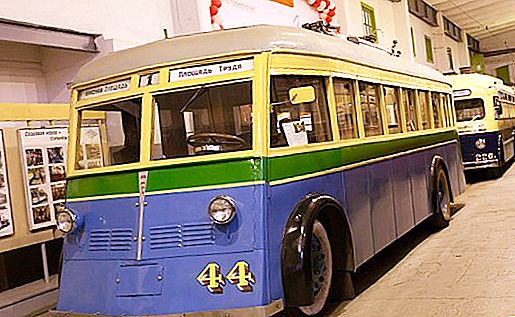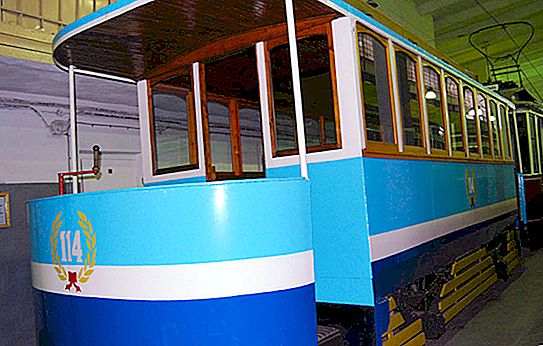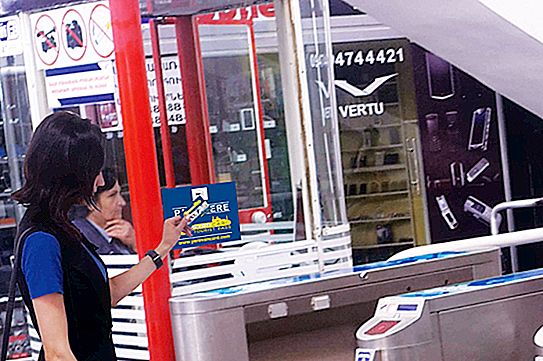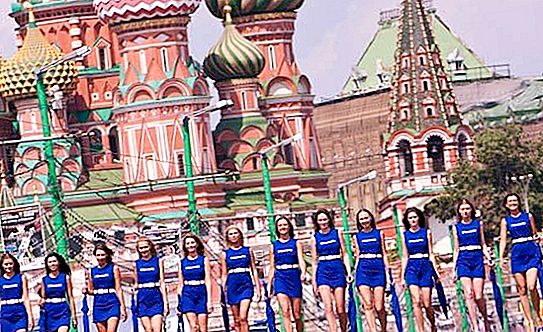In St. Petersburg, the popularity of the retrotransport has recently increased: more and more often you can see trams and cars on the streets that our grandparents drove. They participate in parades and festive events. Some old trams run in the city every weekend, and anyone can ride them around the city. Those who are especially interested in retrotransport, want to learn about the evolution of electric transport in St. Petersburg or just broaden their horizons, it is worth visiting the St. Petersburg Museum of Urban Electric Transport.

About the museum
The Museum of Urban Electric Transport in St. Petersburg is a subdivision of St. Petersburg State Unitary Enterprise Gorelektrotrans. Tourists often ignore this museum, and its exposition is a very entertaining sight.
The Museum of Electric Transport of St. Petersburg is located on the territory of Vasileostrovsky Tram Park - the first in the city. The exposition is located in two of the three depot buildings, from which the St. Petersburg tram first left in 1907. The tram depot was built in 1906-1908. according to the project of engineers A. Kogan, F. Teichman and L. Gorenberg, and the administrative building was made in the modern style in 1906-1907. and later reconstructed according to the project of A. A. Lamagin.
History
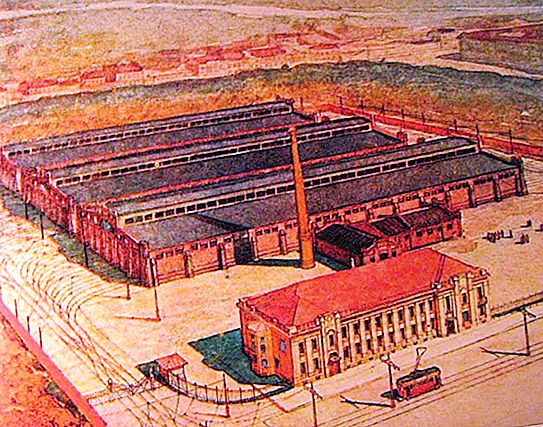
The Museum of Urban Electric Transport was opened in Leningrad in 1967 on the occasion of the 60th anniversary of the launch of the first tram. At first he did not have an official status, but the exhibits were photographs. Restoration of equipment sent "retired" was carried out later.
In the 1980s The winner of the All-Russian Tram Drivers' Professional Competition Andrei Ananyev together with his associates began to actively promote the idea of placing a real museum collection in the depot. By 1982, not only Soviet, but also foreign tram models began to appear in the museum. Of course, these were only replicas of foreign cars produced in Russia. For example, one of their brightest representatives today is an old tram like Brush. He went on permanent routes back in 1907, that is, as much as 111 years ago! This model can be seen not only in the museum's exposition, but also in several Soviet films.
Old models of trolleybuses appeared in the museum collection in 1999. In the form in which the electric transport museum exists now, it began to function in 2008. Until that moment, similar museums were already created in tram and trolleybus parks, but they did not have an official status.
In 2009, there was a threat of irretrievably losing the tram park along with the museum. The land on which it is located was planned to be built up with various commercial facilities. After some time, the dismantling of tram tracks and a contact network was even begun. Nevertheless, in 2011, thanks to the team of the new governor of St. Petersburg and activists, historical buildings were able to be defended. November 2, 2014 Vasileostrovsky Park received the status of an object of cultural heritage.
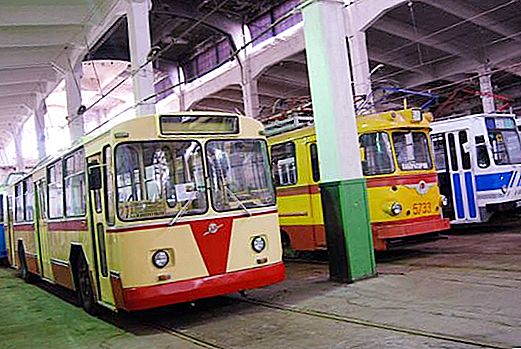
Collection
Museum exhibits are located in accordance with the chronology of the development of electric vehicles in St. Petersburg. The collection consists of trams and trolleybuses from ancient to almost modern. The museum stores the carriage Konka - the predecessor of ordinary trams usual for the townspeople. And recently, the first bus appeared in the museum’s collection. This is a "festival" bus, transporting in the past many stars of the Soviet stage: Lyudmila Gurchenko, Leonid Kostritsa, Edith Piekha. The museum also has unique exhibits that have been preserved in a single copy. In total, the collection of the Museum of Electric Transport in St. Petersburg includes 22 tram cars, 1 bus and 7 different trolley buses.
All vehicles are serviceable, since they are carefully maintained, and therefore they periodically participate in the filming of historical films, retro exhibitions, city parades. For example, in the picture "Dog’s Heart" the carriage 1028 appears - just the one that is now in the museum. In addition, the museum exhibits were the heroes of the films "Brother", "Lenin in October", "Master and Margarita" (MS-1 car, tail number 2424) and others.
In addition to transport "with history", the museum also stores a variety of illustrations, photographs, drawings, brochures, tickets from different years, route maps, cash registers, posters, conductor bags, identification cards, uniforms, office telephones and composters. There are separate rooms where paintings, mini-models are presented and even various excerpts from the movies are broadcast, in which the famous transport was already shot. Antique furniture of 1907 is presented, which was used by the first director of the park.
Tours
The Museum of Electric Transport of St. Petersburg is open to visitors from Wednesday to Sunday. On Saturdays and Sundays, four times a day guided tours lasting about 2 hours are provided. It is recommended to come on an excursion in advance. If the group has more than 8 people, you can ride an old tram through the park for an additional fee.
The tours are organized in an original way, taking into account the peculiarities of the museum: the group enters a tram or trolley bus and listens to the guide’s story, then moves on to the next one. Excursions are very fun and informative. You can learn a lot of interesting facts from them: for example, that first trams in the city were launched on the ice of the Neva, how difficult it is to work as a conductor of the longest tram in the world, what the collision of the heaviest tram with a tank led to, about the fact that one of the trolleybuses managed to stay even in a garden hut, and many other entertaining and funny stories. You can take photos and shoot videos (for free), enter trolleybuses and wagons, sit in the passenger seats, and if the cab is open, you can also inspect it. It is allowed to touch everything, press buttons, ring bells, etc. Only the stairs leading up to the contact network cannot be climbed: wires are energized.

The time for self-examination of exhibits is not limited. If you go into the interior of each car, it will take at least an hour, although at first the exposure does not seem so big.
On June 23, 2018 at 13:00, as part of the exhibition "In the Artist's Studio" at the Museum of Electric Transport, a lesson in multilayer painting will be held for everyone.
From June 1 to July 31, 2018, drawings of children under 12 years old are accepted for the competition "Trams and trolleybuses in the city on the Neva". At the end of summer, an awards ceremony and an exhibition of works will be held at the Electric Transport Museum of St. Petersburg, the best of which will subsequently decorate the exterior of city trams. The competition is dedicated to the 155th anniversary of Konka and the 315th anniversary of the city.

Reviews
The Museum of Urban Electric Transport invariably pleases its visitors. They like that near each exhibit there is a sign with a description. It is also important that you can go into many trams and trolleybuses, touch everything, take a picture, feel yourself in the role of a conductor and a car driver. Sometimes the museum even hosts wedding photo shoots. However, according to some visitors, lighting is not enough for photography in a depot.
Guests celebrate the administration’s excellent preparations for Museum Night. The flows of people are clearly organized, there are enough guides for everyone. By the way, the guides themselves are able to control the equipment exhibited and know absolutely everything about it. Their stories are interesting even to preschoolers, so those who were in the museum recommend coming there with their children. Also, visitors are advised to dress warmer in the cold season, as the air temperature in the depot is almost the same as on the street.
Useful information
Schedule: from Wednesday to Sunday from 10 a.m. to 6 p.m., you can go to the museum up to 5 hours. The cash desk also works only until 5 pm.
Excursion service is carried out on Saturday and Sunday 4 times a day: at 10:00, 11:30, 14:00 and 16:00.
The price of a regular admission ticket is 300 rubles, and a preferential ticket is 100 rubles. Tour guide services are free. Participation in a trip on a retro tram after the tour is paid separately and costs 160 rubles, and for privileged categories of visitors - 100 rubles.

